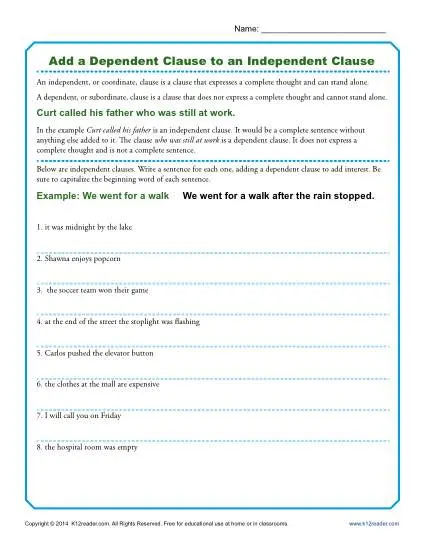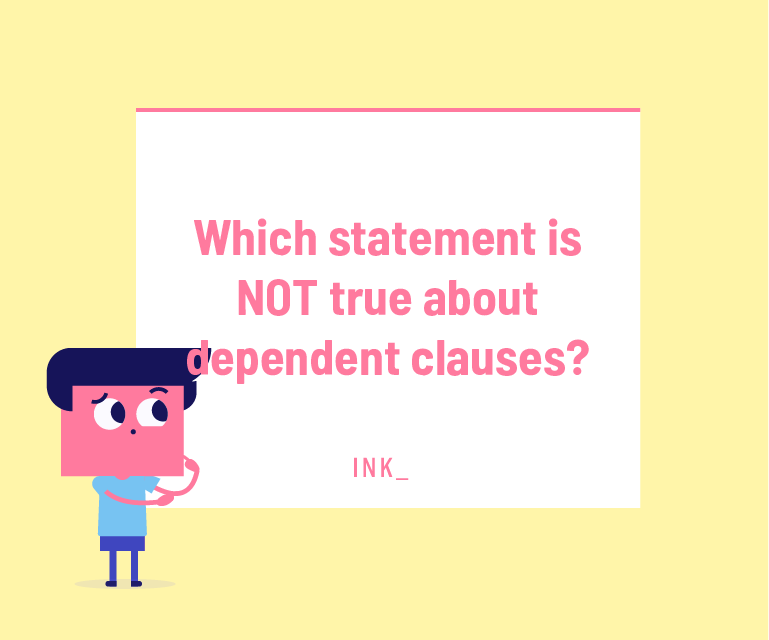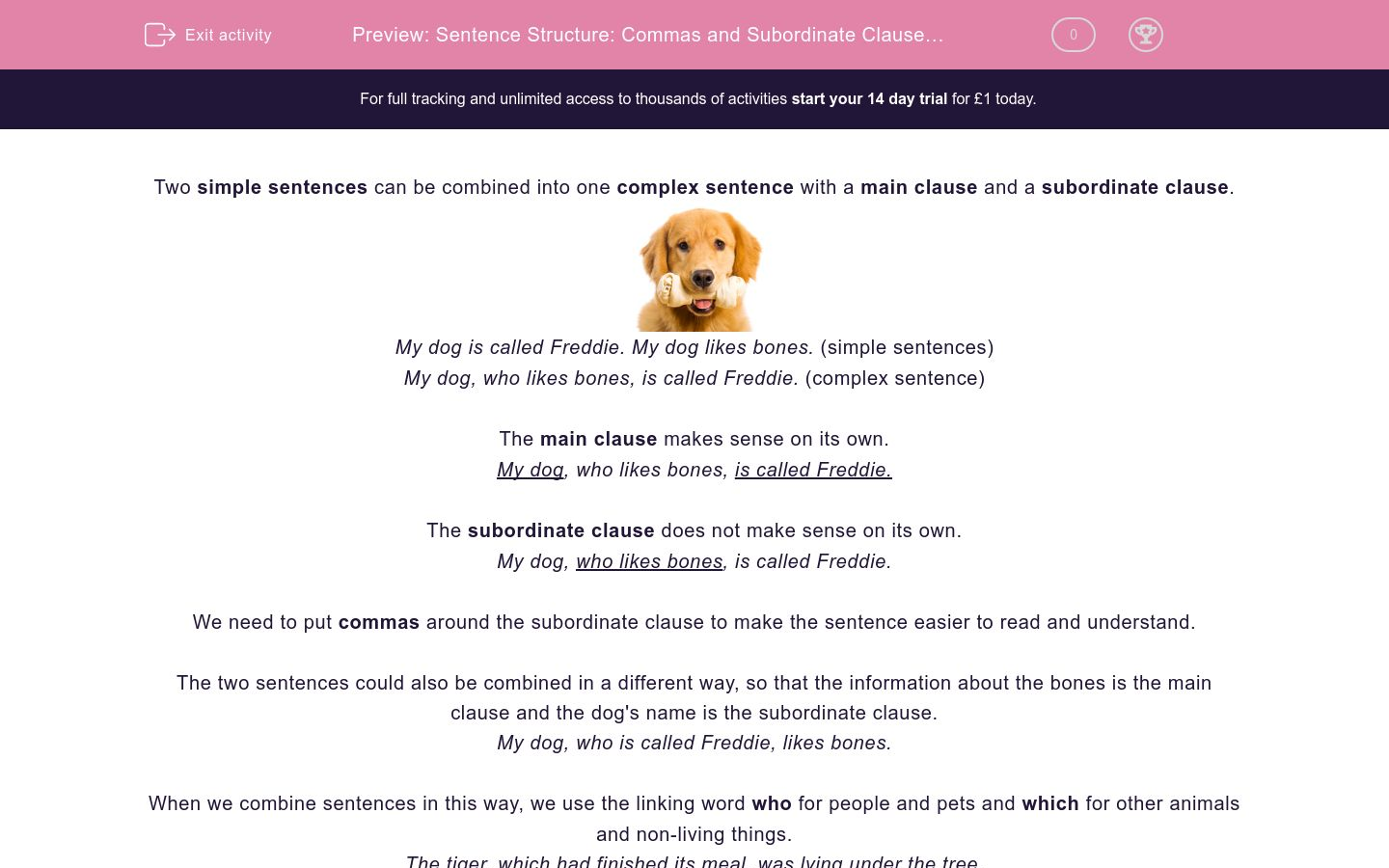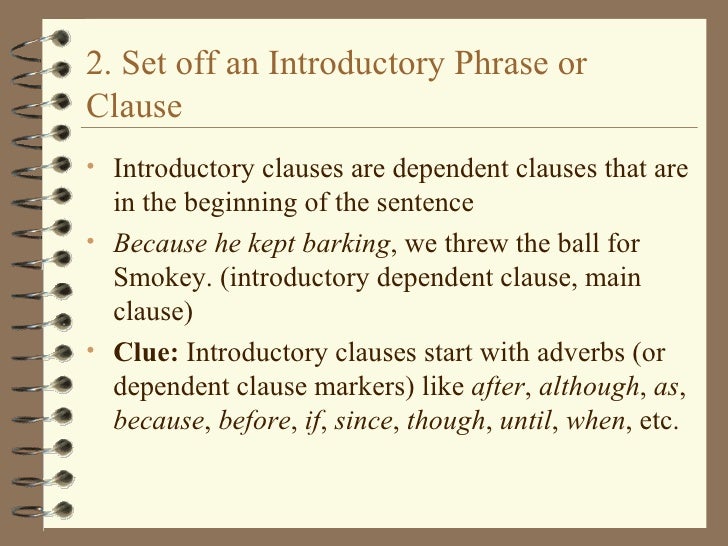A compound sentence contains two or more independent clauses linked by a coordinating conjunction. Independent clauses are those that can stand alone as complete sentences. The most common coordinating conjunctions are and, but, and or. In certain cases, nor, yet, so, and for act as coordinating conjunctions.
If you locate a run-on sentence and find where the two independent clauses "collide," you can decide how best to separate the clauses. Fixing run-on sentences is very similar to fixing comma splices. You can make two complete sentences by inserting a period. You can use a semicolon between the two clauses if they are of equal importance; this allows your reader to consider the points together. You can use a semicolon with a transition word to indicate a specific relation between the two clauses; however, you should use this sparingly.
You can use a coordinating conjunction and a comma, and this also will indicate a relationship. Or, you can add a word to one clause to make it dependent. In this sentence, you are late and you will fail the class are independent clauses, and if…then is the correlative conjunction. So, the above example should include a comma because the correlative conjunction links two independent clauses. Once you discover where the two independent clauses are "spliced," there are several ways to separate them.
You can use a coordinating conjunction following the comma, and this also will indicate a relationship. One of the purposes of the comma is to balance in parallel elements of like meaning and form. Writers like to sprinkle their work with subordinate clauses because they add variety to sentence structure. A reading diet too heavy with simple sentences or even compound sentences becomes wearisome quickly. Subordinate clauses—also known as dependent clauses—used skillfully can add complexity and artfulness to writing.
A common question regarding coordinating conjunctions and commas is whether a comma should appear before or after but or and or any other conjunction. (In this instance, should there be a comma after but, or is the comma before but correct?). The rule is that when two independent clauses are joined by a conjunction, a comma should nearly always precede the conjunction . That is, like in the example above, there should be a comma before but, but there would never be a comma after but. This is the trickiest arena in which to learn comma usage. You really need to know the rest of your grammar rules well in order to properly use commas.
Knowing dependent and independent clauses is essential – so bone up on it if you must! (These videos are a good place to start.) In today's post, I'm going to cover each of the four sentence structure types and let you know when and when not to use a comma. A dependent clause can be nestled inside an independent clause. When a dependent clause is within the independent one, it's an interrupter.
An interrupter simply breaks the flow of a sentence, and there are many different kinds, not just dependent clauses. Any time these items interrupt a sentence—interrupt an independent clause—they are nonessential elements and need to be separated from the independent clause with punctuation. An independent clause is a unit of grammatical organization that includes both a subject and verb and can stand on its own as a sentence. In the previous example, "I went running" and "I saw a duck" are both independent clauses, and "and" is the coordinating conjunction that connects them. The information between the commas could be lifted out of the sentences and these sentences would still make sense in terms of both grammar and meaning. That is, taking out the dependent clauses would not negate the other parts of the sentence.
The information may add details, but taking it out wouldn't change the major thrust of the sentence or have readers trying to figure out what was going on. The sentences without the nonessential words, phrases, and clauses can stand on their own. Many follow directly from the grammar of the sentence, such as those that distinguish between restrictive and nonrestrictive elements in a sentence.
But this comma that comes in to demarcate two independent clauses is entirely optional — in all contexts — if those two clauses are short and closely related. Beyond that, in fiction, if you're going for a particular voice, a particular effect, it's perfectly permissible to omit this comma even with much longer structures. You'll see that approach more with some authors than others.
In this sentence, "for my existing workload" does not have a verb. It is not a complete sentence and cannot stand on its own. For this reason, you do not need a comma before the word "but" because both phrases are not independent clauses. The clauses that subordinating conjunctions (if, because, since, when, while, although, after. . . ) introduce are dependent and cannot be punctuated as complete sentences. Remember that although these clauses have subjects and verbs, the subordinating conjunction makes it dependent and unable to stand alone.
If the sentence begins with a dependent clause, a comma goes at the end of the clause . To review, the English language is made up of many dependent and independent clauses. A clause is a group of words with a subject, a person doing the action, and a predicate, the action and the words that follow.
Some simple sentences only have a verb as the predicate. As you may recall from above, an independent clause has a subject and a verb and can stand on its own as a sentence. Often, a coordinating conjunction will connect two independent clauses — like the word "but." One of the ways we use commas is to join two independent clauses with a coordinating conjunction. When a clause makes sense by itself and can stand as an independent sentence, it's called an independent clause. Like an independent clause, it has a subject and a verb.
It may not, however, express a complete thought and may begin with a signal word called a subordinating conjunction. The chart below outlines common coordinating and subordinating conjunctions discussed in this section. When you have two independent clauses (i.e., full sentences) that are joined by a coordinating conjunction, you have a compound sentence. To combine two complete sentences/ independent clauses, you have two options. You can use a comma with a conjunction, or you can use a semicolon. If you use a comma and conjunction, the acronym FANBOYS will help you remember the conjunctions .
If you use a semicolon, you do not have to capitalize the first letter of the next sentence. Academic writing expresses complex ideas and, as a result, often requires sentences that are equally complex. For this reason, it's not uncommon to see comma splices—joining two independent clauses with a comma—in your work as the demand for complexity increases. Below you'll find ways to recognize and correct these kinds of errors. It's there also to call out this balanced relationship between the two clauses. Using it represents the baseline and neutral approach.
Still another way to form a compound sentence is to use a semicolon AND a conjunctive adverb between the two independent clauses. Fused sentences happen when there are two independent clauses not separated by any form of punctuation. The error can sometimes be corrected by adding a period, semicolon, or colon to separate the two sentences.
A comma splice is the use of a comma between two independent clauses. And, but, yet, so, or, nor, and for are coordinating conjunctions and are used to join independent clauses. Subordinate clauses are used to add information that gives further meaning to an existing independent clause. The list of subordinating conjunctions below are all familiar words that you have used before. A complex sentence contains an independent clause and one or more dependent clauses. A dependent clause, unlike an independent clause, cannot stand on its own as a complete sentence.
The conjunctions and prepositions most commonly used to introduce a dependent clause include if, because, while, as, although, since, and unless. A simple sentence contains only one independent clause and no dependent clauses. When a simple sentence contains a conjunction, you might be tempted to insert a comma before the conjunction, as you do with a compound sentence. With a simple sentence, however, the general rule is to omit the comma.
Though not necessarily mechanical, the use of commas in lists is well established. In this usage, the comma separates a series of words, phrases, or independent clauses. In most cases, joining two independent clauses (i.e., clauses that can stand alone as complete sentences) by a comma creates a comma splice. Many students understand that a complete sentence contains a subject and a verb, but what if that sentence does not create a complete thought? Dependent clauses may look a whole lot like independent clauses, but they are only meant to complement the independent clause and not stand on their own. CMOS states that independent clauses stand on their own and are joined by conjunctions such as and, but, so, yet, etc.
Though the comma can be omitted if the clauses are short enough or closely connected to each other, typically commas are needed to separate two independent clauses. Although this coordinating conjunction conjoins two independent clauses, they are short and closely related. And adding in the comma would change the shape of the larger structure. Some students are unfamiliar with the definitions and rules of clauses and punctuation, the basic building blocks of sentence structure. This problem does not show itself too much when you write in the first person voice ("I remember once . . .") because that is your natural idiom. In some ways, it seems like trying to write in a foreign language.
When writing complex sentences, it is important to look at whether the clauses are independent or dependent clauses. If the clauses are independent and could function as separate sentences, you do need a comma. However, if the clause is dependent and relies on the independent clause before it, you do not need the comma.
Semicolons (;) Semicolons are used to connect two independent clauses and to separate items in complex lists. In this lesson, we will look at two types of clauses and how to combine them. The first type of clause is called an independent clause. It has all the components of a complete sentence, which means it has a subject and a verb in the predicate.
Thus, if an independent clause is separate from other sentences, it will be a logical simple sentence. The three major types of subordinate clauses are called noun clauses, adjective clauses, and adverb clauses. These subordinate clauses cannot stand alone, therefore, their meaning is dependent on the main clauses that they are paired with. If the two independent clauses are very short, you can omit the comma. As noted in the intro, the trend nowadays is to omit the comma wherever possible.
Note that students might be wondering how they can tell if a clause is 'short.' Remind them that if they're in doubt, use a comma because that will always be considered correct. In fact, you may not want to mention this rule to your lower-level students—it might cause unnecessary confusion. If the conjunction is only joining parts of the independent clauses (i.e., the second subject and/or verb is dropped because it is the same), no comma should be used. Coordinating conjunctions are conjunctions, or joining words, that are placed between words and phrases of equal importance. Used with coordinating conjunctions, commas allow writers to express how their complete thoughts relate to one another. They also help avoid the choppy, flat style that arises when every thought stands as a separate sentence.
Dependent Clause Examples With Commas When an introductory phrase or clause, or any other dependent clause, equally modifies the compound structure of two independent clauses, the standard approach is not to use a comma. David, you are indeed correct about not putting a comma between the two parts of correlative conjunctions. The only time such pairs should get a comma is if both parts contain independent clauses—Not only was Rico confused, but he was also excited. Keep in mind that while we were looking at commas with dependent clauses, we were specifically looking at adverbial clauses beginning with subordinating conjunctions. This rule is similar to the rule above, except you're using conjunctive adverbs to join the independent clauses.
In each of the examples above, the two parts of the sentence separated by the comma could stand as full sentences by themselves. A compound sentence contains more than one independent clause. The clauses can be joined by a semicolon, a colon, or a coordinating conjunction . Many inexperienced writers run two independent clauses together by using a comma instead of a period. This results in the dreaded run-on sentence or, more technically, acomma splice.
The semicolon is used to join two independent clauses that are logically connected. If a comma is used to connect the sentences, the result is a common sentence error called a comma splice. Dependent clauses and independent clauses can be combined using different methods. Learn more about clauses and understand how to use a comma, conjunction, and semicolon to join dependent and independent clauses.
When a coordinating conjunction is used to separate independent clauses, a comma should be placed before the conjunction. If two independent clauses are joined by a conjunction , use a comma. This is true whether the subject is the same or different in both clauses.
This is also true for imperative sentences where the subject is dropped. In the above sentence, Jane is making dinner and Josie is bringing dessert are both independent clauses . But is the coordinating conjunction joining those two independent clauses together.
Therefore, you place a comma after the first independent clause, before the conjunction. In cases like this, do separate the dependent clause with a comma. When joining two independent clauses, or clauses that could stand on their own as full sentences, place a comma before the conjunction. If the second independent clause is very short, or if it is an imperative, the comma can be omitted. Even were the remainder of the piece to use this conventional comma, it would be fine to leave it out here. Use a comma to connect two independent clauses without a conjunction.
Use a comma before a coordinating conjunction to connect two independent clauses. Sometimes, we want to link two independent clauses together without using "and" or "but," or any other coordinating conjunction. Writers make this error when they try to separate the two independent clauses in a compound sentence with a comma alone. Twoindependent clauses can also be joined into one compound sentence with a semicolonalone. If, however, you were writing these sentences, you would need to determine what you wanted to say and then construct the sentence in a way that conveyed your meaning.



























No comments:
Post a Comment
Note: Only a member of this blog may post a comment.